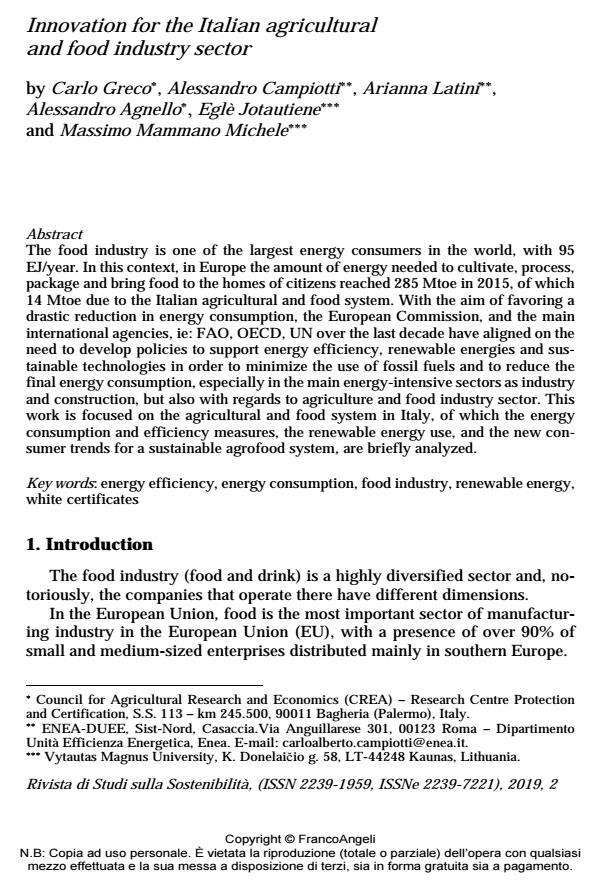Innovation for the Italian agricultural and food industry sector
Journal title RIVISTA DI STUDI SULLA SOSTENIBILITA'
Author/s Carlo Greco, Alessandro Campiotti, Arianna Latini, Alessandro Agnello, Eglè Jotautiene, Michele Massimo Mammano
Publishing Year 2020 Issue 2019/2 Suppl.
Language English Pages 12 P. 115-126 File size 76 KB
DOI 10.3280/RISS2019-002-S1008
DOI is like a bar code for intellectual property: to have more infomation
click here
Below, you can see the article first page
If you want to buy this article in PDF format, you can do it, following the instructions to buy download credits

FrancoAngeli is member of Publishers International Linking Association, Inc (PILA), a not-for-profit association which run the CrossRef service enabling links to and from online scholarly content.
The food industry is one of the largest energy consumers in the world, with 95 EJ/year. In this context, in Europe the amount of energy needed to cultivate, process, package and bring food to the homes of citizens reached 285 Mtoe in 2015, of which 14 Mtoe due to the Italian agricultural and food system. With the aim of favoring a drastic reduction in energy consumption, the European Commission, and the main international agencies, ie: FAO, OECD, UN over the last decade have aligned on the need to develop policies to support energy efficiency, renewable energies and sustainable technologies in order to minimize the use of fossil fuels and to reduce the final energy consumption, especially in the main energy-intensive sectors as industry and construction, but also with regards to agriculture and food industry sector. This work is focused on the agricultural and food system in Italy, of which the energy consumption and efficiency measures, the renewable energy use, and the new consumer trends for a sustainable agrofood system, are briefly analyzed.
Keywords: Energy efficiency, energy consumption, food industry, renewable energy, white certificates
Carlo Greco, Alessandro Campiotti, Arianna Latini, Alessandro Agnello, Eglè Jotautiene, Michele Massimo Mammano, Innovation for the Italian agricultural and food industry sector in "RIVISTA DI STUDI SULLA SOSTENIBILITA'" 2 Suppl./2019, pp 115-126, DOI: 10.3280/RISS2019-002-S1008